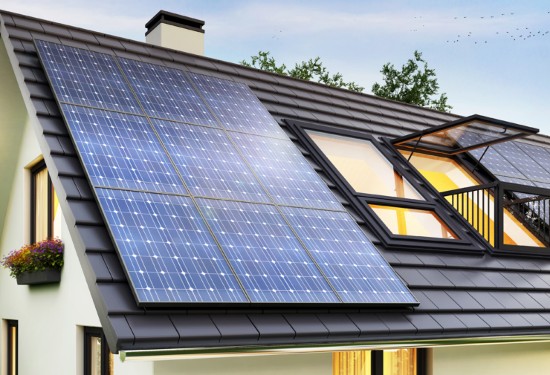One thing is certain. Solar power is an inexhaustible fuel source as long as the sun is shining. We can access it from sunrise to sunset every day and it is noise and pollution-free.
Using solar panels fulfills much of our energy needs while eliminating the creation of greenhouse gas (GHGs) emissions. But like other renewable energy sources, solar power technology has some drawbacks. It doesn’t work when the sun goes down and requires supplementary backup power to bridge the night.
Is it 100% green? Questions remain about the way panels are manufactured, and the way in which they are disposed of and recycled. But before we look at the environmental downside it is good to know what options exist in types of solar panels available today and in the near future. So here is a list along with the pros and cons for each type.
Which Solar Panel is Right for You?
There are four types and they vary in appearance, design, efficiency, performance, and cost.
Monocrystalline
Monocrystalline solar panels provide high-performance and high-efficiency ratings. This type of panel is manufactured using a single pure silicon crystal. It converts sunlight into electricity with conversion efficiency rates of up to 21%. Besides delivering good performance, monocrystalline panels require little space. A small area on a roof is all that you need for installation. These panels are black in appearance with each silicon wafer presenting rounded edges. They are more expensive than other panel types. A downside is in manufacturing they produce a lot of pure silicon waste.
Polycrystalline
These panels have a blue appearance. They are made from melted silicon cut into square moulds. The process of manufacturing is less complicated and more cost-effective compared to monocrystalline, producing much less waste. Polycrystalline is more affordable than other panel types. The conversion efficiency of these panels is somewhere between 13% and 16%. They also don’t perform as well in higher temperatures and take up much more roof space for the same amount of energy yield one gets from monocrystalline panels.
Thin Film
These panels use alternative photovoltaic materials to pure silicon. Most commonly they are made using cadmium telluride (CdTe), copper indium gallium selenide (CIGS), and amorphous silicon (a-Si). Manufacturing involves depositing thin layers of the material over a metal, glass or plastic substrate.
Thin-film panels are easy to manufacture with the flexible substrate making it possible to use them in a variety of applications. They have a median efficiency rating of 15% to 16% and perform well in low-light and high-temperature conditions. The downside is they tend to degrade faster and often come with a shorter warranty than pure silicon panels.
Perovskite
Perovskite is the next generation in solar panel material evolution. These panels use cube and diamond-like octahedral crystals to absorb light and produce efficiency ratings currently of between 23% to 25%. Those working on perovskite solar believe the efficiency of these panels can be improved to 40% energy conversion in the near future.
Another advantage to perovskite is it is abundant and more versatile, and cheaper to produce than silicon panels. The downside is the waste produced from manufacturing perovskite panels is toxic to the environment. That’s why we are not seeing the material replacing the alternatives today.
Negative Environmental Impacts of Solar Energy
What are some of the consequences of choosing to use solar energy?
Manufacturing Processes Involve Hazardous Materials
The manufacturing process for most solar panel types today is not entirely clean and produces pollution. There are hazardous chemicals and materials including lead, cadmium, nitrogen trifluoride, and sulphur hexafluoride. Mishandling of hydrofluoric acid, a highly corrosive liquid used to clean silicon wafers can lead to contamination of land and water resources.
Commercial Solar Energy Production Involves a Lot of Land
Commercial solar farms require a considerable amount of space to produce high volumes of electricity. Land clearing can lead to irreversible damage to an environment causing increased soil erosion, destruction of native vegetation, loss of natural habitat, displacement of wildlife, altering of natural drainage, and replacing existing land usage such as farm and pasture.
Improper Waste Disposal Can Be Destructive
What happens to solar panels at the end of life. Used panels and solar energy systems create a large amount of toxic waste that contains molten salts, hydraulic fluids, coolants, and lubricants. These are not easy materials to recycle causing problems for manufacturers and consumers and leading to the irresponsible and improper disposal of the materials at end of life. What’s needed is best practices for the collection, transportation, stockpiling, and disposal of panels at the end of life
Environmental Impacts of Solar Energy
Solar power remains promising and exciting. Manufacturers, consumers, and other stakeholders need to understand the long-term environmental impacts the technology can have on the environment before mass implementation creates a solar waste and environmental crisis. That means creating new industry guidelines that align with environmental performance requirements.









